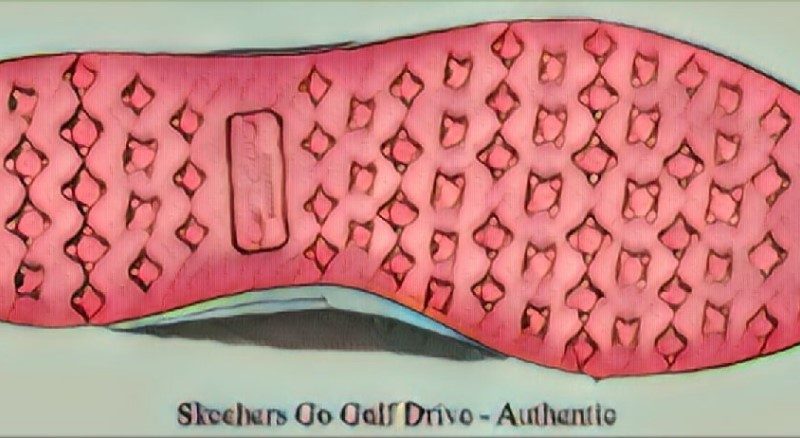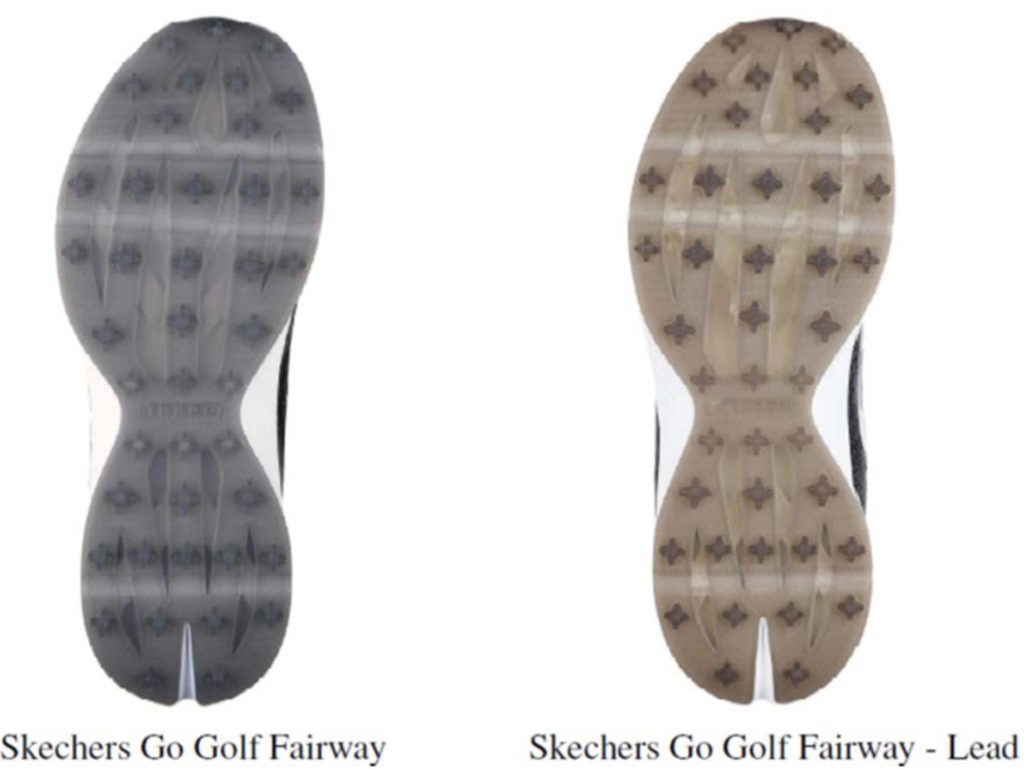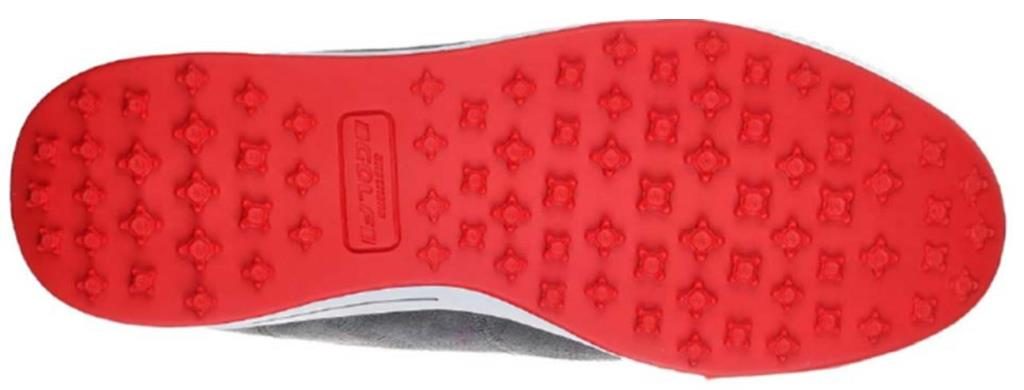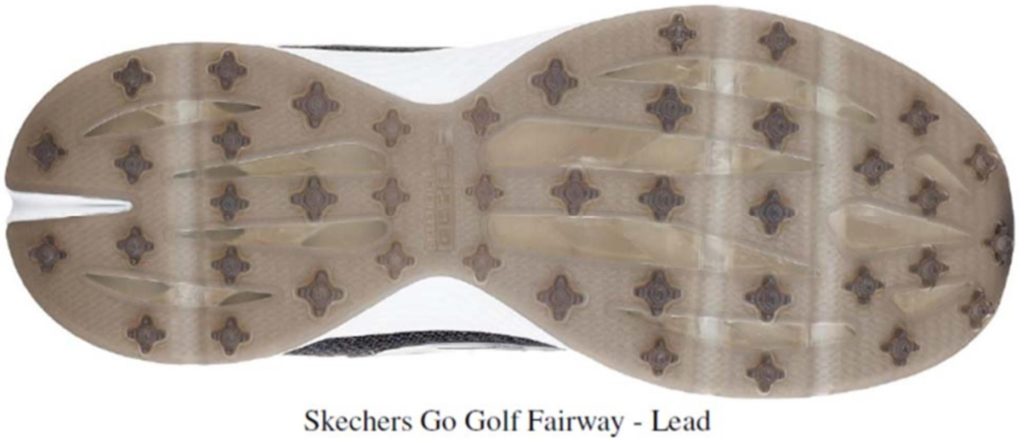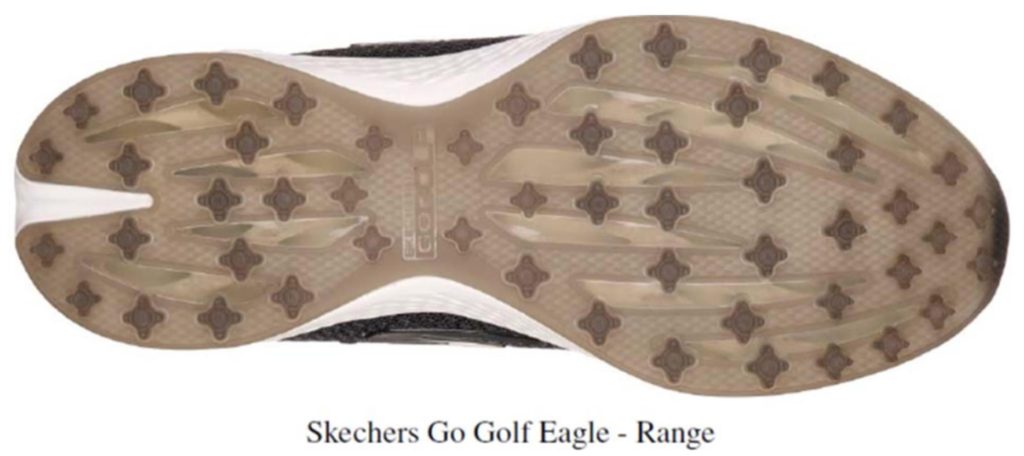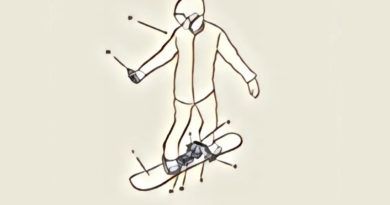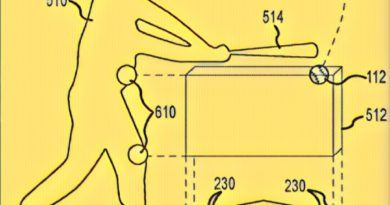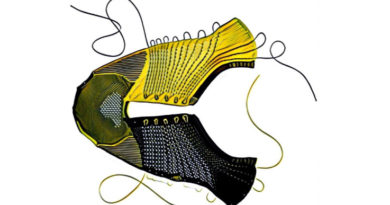Innovate or Die in the Shoe Industry

It has only been 1.5 weeks since covering a footwear patent infringement lawsuit brought by Nike against Puma, and there is already additional shoe patent litigation to cover! Just yesterday ECCO Sko A/S (“ECCO” or “Plaintiff”) filed a patent infringement complaint alleging that Skechers USA, Inc. (“Skechers”) is infringing four of their golf shoe patents. Did you hear that? I believe it was Kuchar quietly mumbling “rats,” as only he can. Again, this highlights the fact that new entrants to the footwear industry better have a great patent lawyer working to guide them through the footwear patent landscape.
The patents at issue include United States Patent Nos. 8,490,303 (the “’303 patent”); 8,991,076 (the “’076 patent”); 9,021,722 (the “’722 patent”); and 9,332,803 (the “’803 patent”). Some of the more interesting parts of the complaint are reproduced below for your reading enjoyment.
8. On information and belief, Skechers offers for sale and sells within the United States and the State of Delaware golf shoes that practice, and thereby infringe, certain claims of the ’303, ’076, ’722, and ’803 patents.
.
.
.
18. For example, upon information and belief, Skechers has offered for sale and sold its Go Golf Drive – Classic and Go Golf Drive – Authentic men’s golf shoes directly to consumers in the United States since at least as early as February 2018.
19. Upon information and belief, and as illustrated by the product photographs below, the soles of the Skechers Go Golf Drive – Classic and Go Golf Drive – Authentic men’s golf shoes are identical with respect to cleat structure and arrangement of cleats on the soles (“Sole Type A”):
20. Upon information and belief, Skechers has also offered for sale and sold its Go Golf Fairway and Go Golf Fairway – Lead men’s golf shoes directly to consumers in the United States since at least as early as February 2018.
21. Upon information and belief, and as illustrated by the product photographs below, the soles of the Go Golf Fairway and Go Golf Fairway – Lead men’s golf shoes are identical with respect to cleat structure and arrangement of cleats on the soles (“Sole Type B”):
22. Upon information and belief, Skechers has also offered for sale and sold its Go Golf, Go Golf Eagle – Lead, Go Golf Eagle – Major, Go Golf Eagle – Range, Go Golf Eagle – Rival, Go Golf Famed, and Go Golf Tropic women’s golf shoes directly to consumers in the United States since at least as early as February 2018.
23. Upon information and belief, and as illustrated by the product photographs below, the soles of the Go Golf, Go Golf Eagle – Lead, Go Golf Eagle – Major, Go Golf Eagle – Range, Go Golf Eagle – Rival, Go Golf Famed, and Go Golf Tropic women’s golf shoes are identical with respect to cleat structure and arrangement of cleats on the soles (“Sole Type C”):
24. Upon information and belief, Skechers has established dealers and distributors for selling and offering for sale its products located throughout the United States, including in the State of Delaware.
25. Upon information and belief, during the terms of the Asserted Patents, Skechers has manufactured products embodying the claimed inventions of the Asserted Patents, including the Go Golf Drive – Classic, Go Golf Drive – Authentic, Go Golf Fairway, and Go Golf Fairway – Lead men’s golf shoes and the Go Golf, Go Golf Eagle – Lead, Go Golf Eagle – Major, Go Golf Eagle – Range, Go Golf Eagle – Rival, Go Golf Famed, and Go Golf Tropic women’s golf shoes (collectively, “Accused Products”).
26. On its website, Skechers advertises each of its Accused Products and includes photographs as well as descriptions of the details and construction of each of the specific models of golf shoes that comprise the Accused Products.
27. Skechers’s acts have been without license or authority of Plaintiff
.
.
.
38. Skechers’s golf shoes with Sole Type A, Sole Type B, and Sole Type C literally infringe at least claim 1 of the ’303 patent, which recites:
1. A sole for a golf shoe comprising:
a plurality of cleats integrated with the sole and distributed along a forefoot and a heel area of the sole,
wherein the plurality of cleats is located on and extends from a surface of the sole facing away from the shoe, the cleats of the plurality of cleats being
arranged in transverse rows along a longitudinal length of the sole,
wherein each of the plurality of cleats is essentially cross shaped having cross arms that are connected by arc segments,
wherein individual cleats of the plurality of cleats have greater heights in a ball area and the heel area of the sole than other areas, and
wherein all the cleats of at least one transverse row of cleats have smaller heights than all of the cleats of at least one other transverse row of cleats
39. For example, as shown in the exemplary product photograph below, Skechers’s Sole Type A, used in its Go Golf Drive – Classic and Go Golf Drive – Authentic men’s golf shoes, includes a plurality of cleats that are integrated with the sole and distributed along the forefoot and heel areas of the sole. The cleats on Skechers’s Sole Type A are located on and extend from a surface of the sole facing away from the shoe and are arranged in transverse rows along a longitudinal length of the sole. The cleats on Skechers’s Sole Type A are essentially cross shaped, having cross arms that are connected by arc segments. Individual cleats on Skechers’s Sole Type A have greater heights in the ball and heel areas of the sole than other areas. Moreover, Skechers’s Sole Type A comprises at least one transverse row of cleats in which all of the cleats have smaller heights than all of the cleats of at least one other transverse row of cleats.
40. As shown in the exemplary product photograph below, Skechers’s Sole Type B, used in its Go Golf Fairway and Go Golf Fairway – Lead men’s golf shoes, includes a plurality of cleats that are integrated with the sole and distributed along the forefoot and heel areas of the sole. The cleats on Skechers’s Sole Type B are located on and extend from a surface of the sole facing away from the shoe and are arranged in transverse rows along a longitudinal length of the sole. The cleats on Skechers’s Sole Type B are essentially cross shaped, having cross arms that are connected by arc segments. Individual cleats on Skechers’s Sole Type B have greater heights in the ball and heel areas of the sole than other areas. Moreover, Skechers’s Sole Type B comprises at least one transverse row of cleats in which all of the cleats have smaller heights than all of the cleats of at least one other transverse row of cleats.
41. As shown in the exemplary product photograph below, Skechers’s Sole Type C, used in its Go Golf, Go Golf Eagle – Lead, Go Golf Eagle – Major, Go Golf Eagle – Range, Go Golf Eagle – Rival, Go Golf Famed, and Go Golf Tropic women’s golf shoes, includes a plurality of cleats that are integrated with the sole and distributed along the forefoot and heel areas of the sole. The cleats on Skechers’s Sole Type C are located on and extend from a surface of the sole facing away from the shoe, and are arranged in transverse rows along a longitudinal length of the sole. The cleats on Skechers’s Sole Type C are essentially cross shaped, having cross arms that are connected by arc segments. Individual cleats on Skechers’s Sole Type C have greater heights in the ball and heel areas of the sole than other areas. Moreover, Skechers’s Sole Type C comprises at least one transverse row of cleats in which all of the cleats have smaller heights than all of the cleats of at least one other transverse row of cleats.
Humm, it doesn’t look great for Sketchers, so it will be interesting to review their response.
Bottom line – it pays to know your cleats!
Dave Dawsey – The Shoe Invention Attorney
PS – please follow me on Twitter (@sportingIP) and sign-up to receive posts via email.

